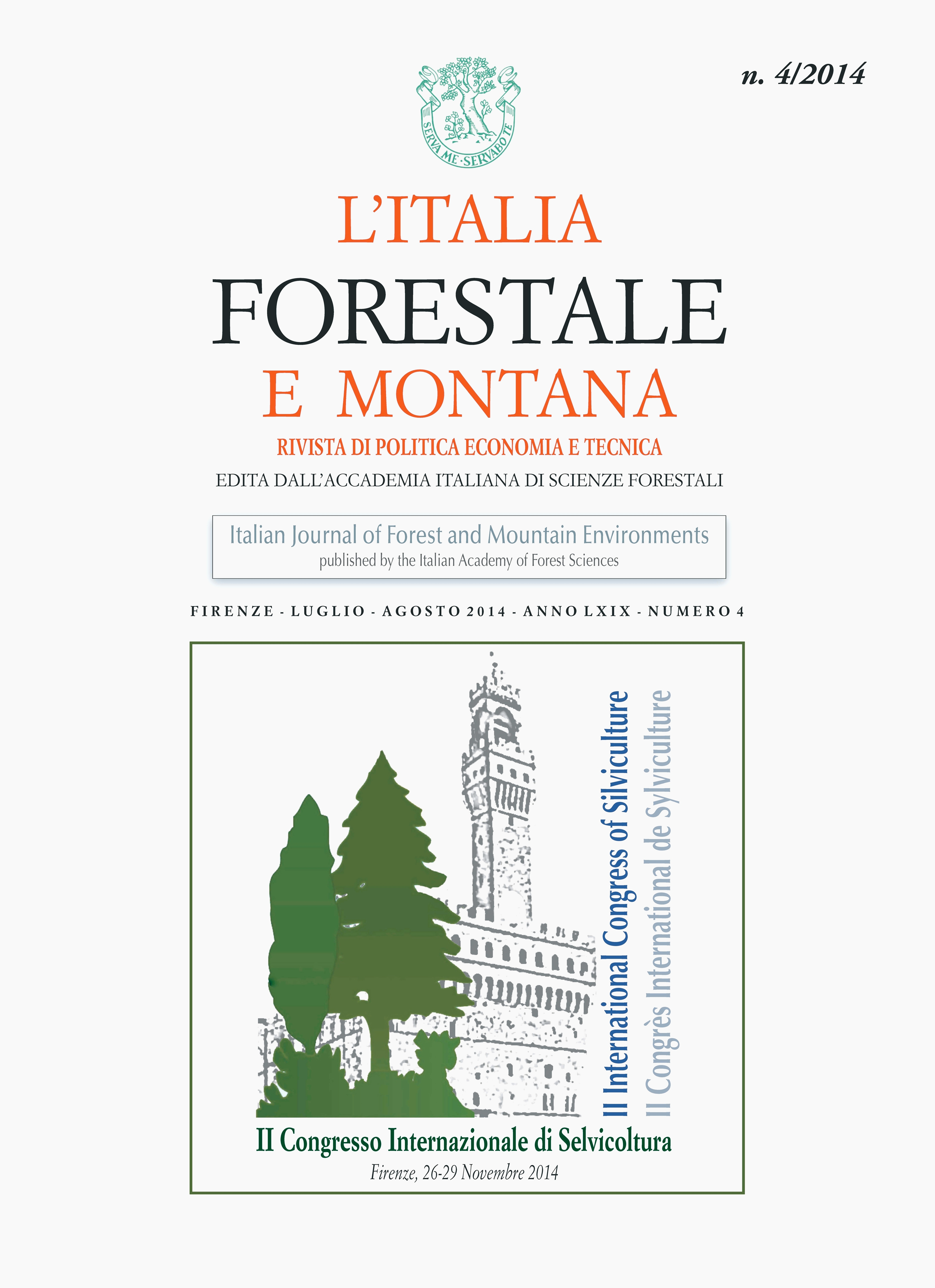Published
2015-02-05
Keywords
- wildfire,
- thinning,
- prescribed burning
Abstract
This paper reports the results of the first fire hazard reduction experiment in Italy which integrates thinning and prescribed burning. The study was conducted in Aleppo pine stands in a high fir-risk area in the Calabrian Region. Two stands with a different stem density were selected. The experiment design included: i) prescribed burning followed by selective thinning from below in the stand with lower tree density; ii) selected thinning from below followed by prescribed burning in the stand with higher tree density. Light/moderate thinning intensity treatments were applied at both sites in June-July 2013. Prescribed burning treatments were conducted in May 2013 and March 2014. Data on fuel characteristics were collected before and after treatments. A working time study was also carried out during thinning operations. During burn operations, fireline intensity never exceeded 100 kW/m. Maximum temperature in the organic soil layer was 130°C, and on average temperatures above 60°C lasted less than 4 minutes. The organic soil layer was not consumed, and no damages to adult trees were observed. The results highlight the positive effect of prescribed burning and thinning on the reduction of fuel load and continuity, and then on potential fire behaviour, thus reducing the susceptibility and vulnerability of Aleppo pine stands to summer wildfires. The integrated approach of the study shows how thinning and prescribed burning, the latter a prevention practice surprisingly not very common in a fire-prone environment like Southern Italy, could be a sustainable practice to be included in the ordinary forest management planning.


